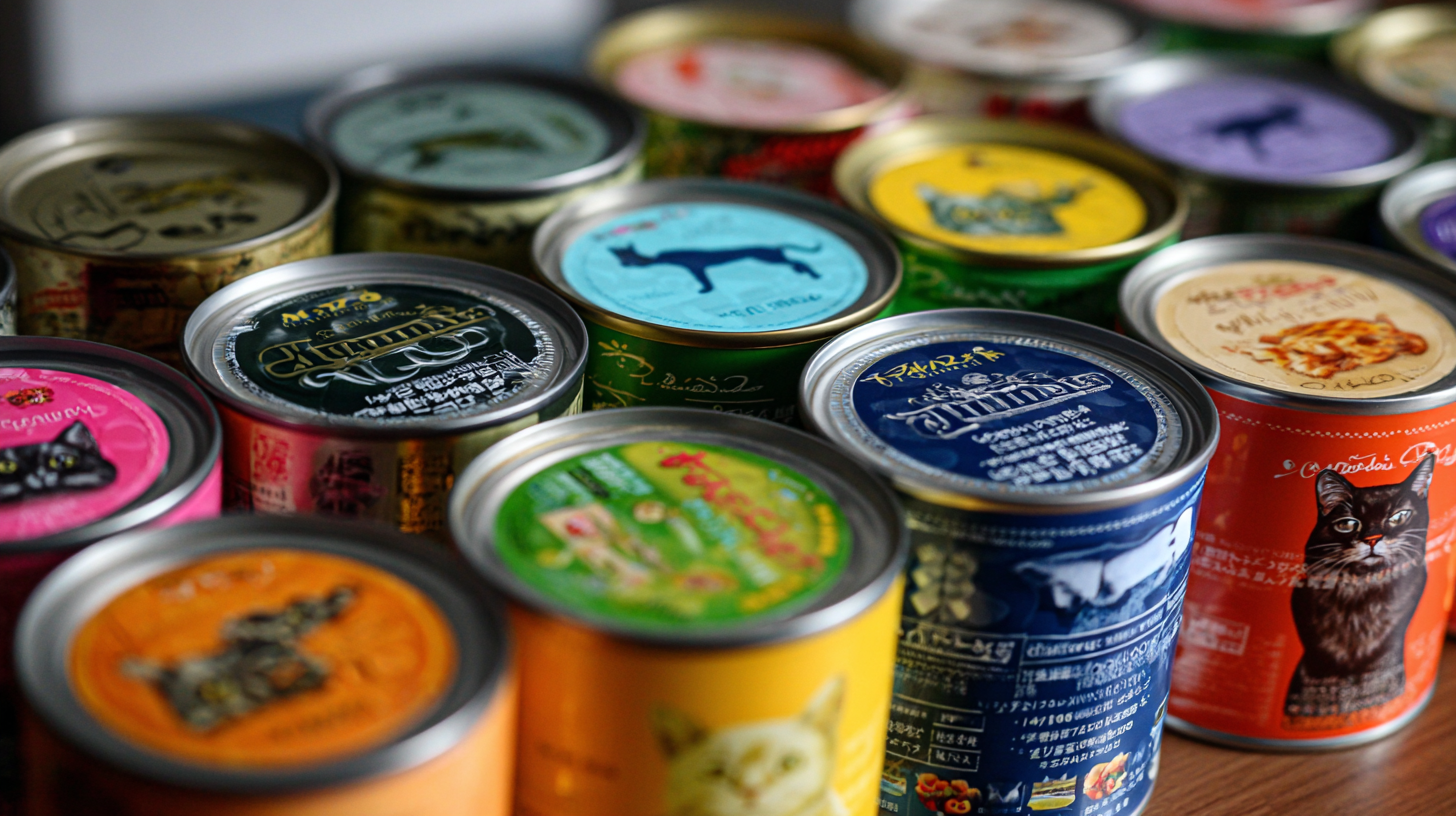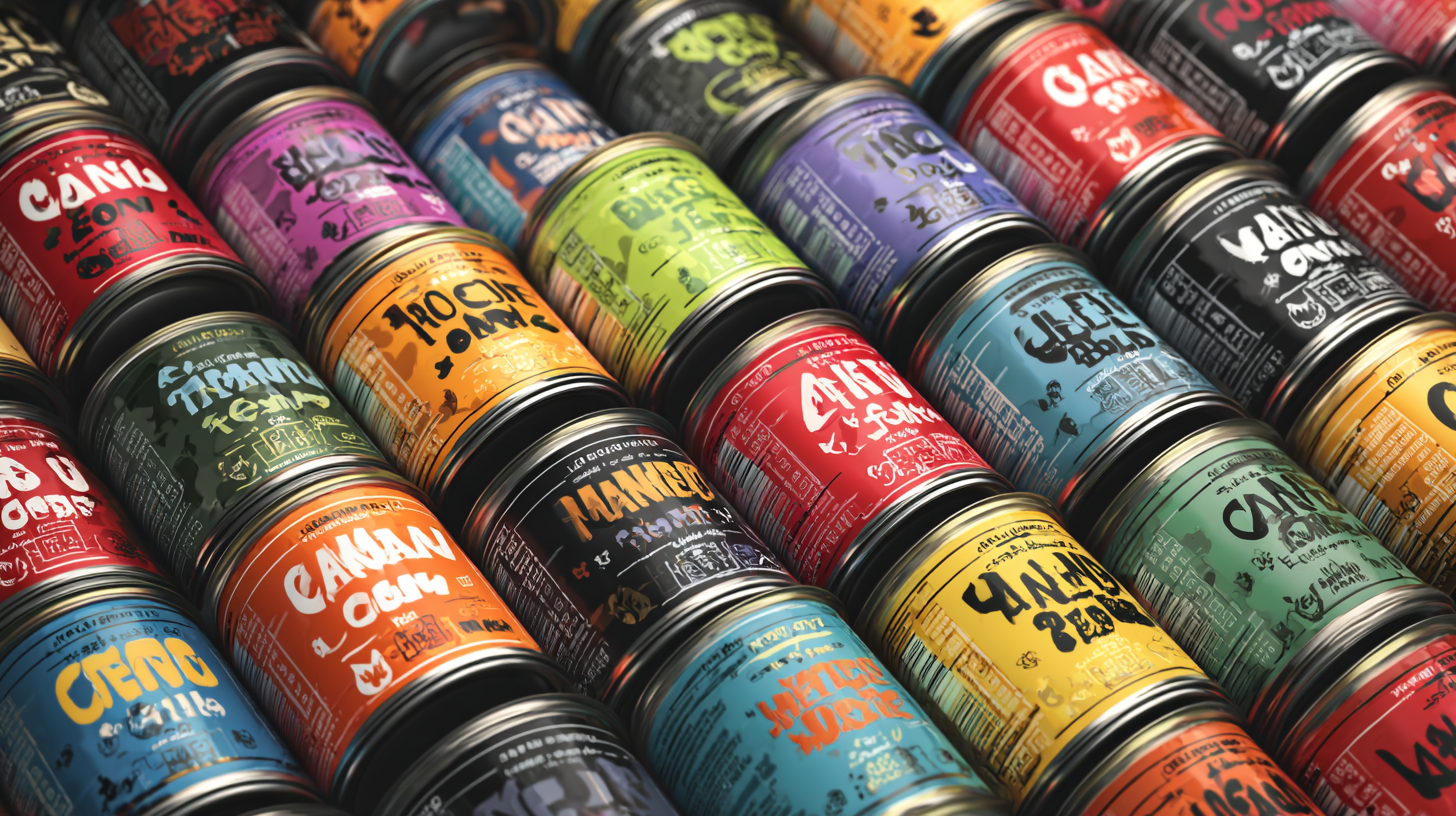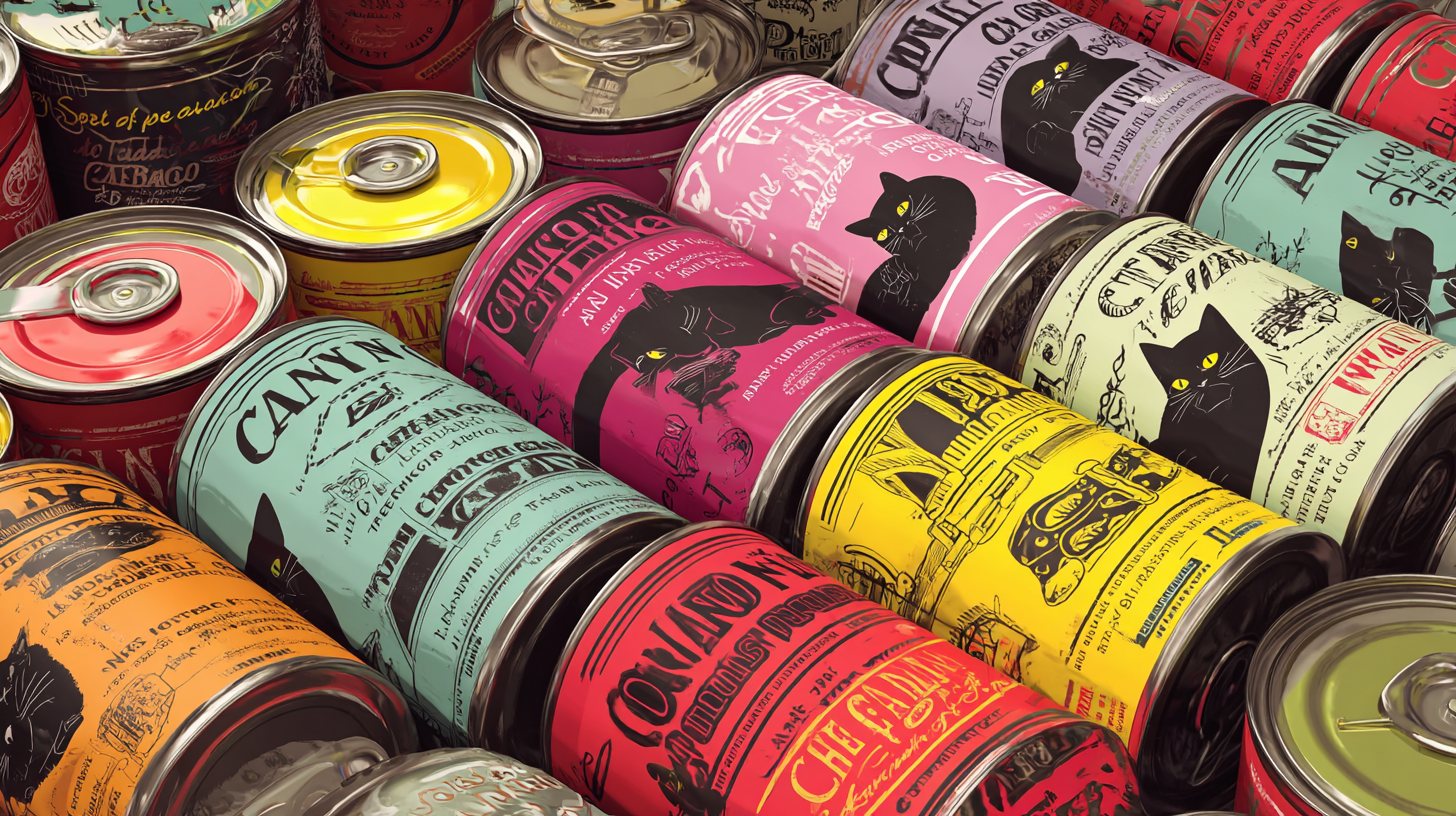As the pet nutrition industry evolves, significant trends are emerging that will shape consumer choices in the coming years, particularly in the realm of canned cat food. According to a report by the American Pet Products Association, the pet food market is expected to reach $110 billion by 2025, with canned food being a key segment driven by convenience and nutritional benefits.
Research from Packaged Facts indicates that 41% of cat owners prefer canned food due to its high moisture content, which promotes hydration and overall health. Moreover, with an increasing demand for high-quality ingredients and transparency in sourcing, global markets are witnessing a shift toward premium canned cat food options.
This blog will explore the 2025 trends in pet nutrition, offering insights on how to choose the best canned cat food that caters to both health benefits and the preferences of today’s discerning pet owners.

As we venture into 2025, the trend of incorporating
sustainable ingredients in canned cat food is
gaining momentum across global markets. More pet owners are prioritizing eco-friendly options
that not only benefit their furry companions but also contribute to environmental preservation.
Ingredients sourced from responsible fisheries, organic farms, and sustainable agriculture are
becoming increasingly popular, reflecting a growing awareness of the ecological impact of pet
food production.
When choosing the best canned cat food, consider looking for labels that indicate
sustainability certifications. Brands that participate in
fair trade practices and utilize renewable resources are typically more trustworthy. Additionally,
seek out foods that contain whole ingredients like real meat, vegetables, and no artificial
additives, ensuring a nutritious diet for your cat while supporting sustainable farming practices.
Tips to ensure you're selecting the right sustainable cat food include researching the company's
sourcing methods and checking if they offer transparency about their ingredient origins. Always opt
for brands that formulate recipes with minimal environmental footprints, such as those using
plant-based proteins or recycling packaging
materials. This not only helps in sustaining global ecosystems but also promotes a healthier lifestyle
for your pets.

In an ever-evolving market, innovative packaging solutions play a pivotal role in the success of canned cat food products. Modern cat owners are not only looking for high-quality nutrition but also for sustainable and user-friendly packaging. Brands can capitalize on this by incorporating eco-friendly materials and designs that enhance convenience. For example, easy-to-open lids and resealable packaging can attract buyers who prioritize practicality alongside their cat’s health.
Tips for selecting the best canned cat food include looking for packaging that highlights the product's nutritional benefits and sourcing information. Moreover, brands should aim for transparency by including clear, easily understandable ingredient lists on their packaging. This empowers consumers to make informed decisions while also fostering trust in the brand. Additionally, consider packaging sizes that cater to various lifestyles, such as single-serve portions for busy pet owners or larger cans for multi-cat households. By focusing on innovative and practical packaging solutions, brands can better align with consumer preferences in the global market.
| Nutritional Aspect | Current Trend | Consumer Preference | Top Ingredients | Sustainability Features | Market Impact |
|---|---|---|---|---|---|
| Protein Sources | High-quality animal protein | Preference for real meat over meat by-products | Chicken, Salmon, Turkey | Source verification and ethically sourced ingredients | Increased demand for premium products |
| Grain-Free Options | Rising trend in grain-free diets | Strong preference among health-conscious owners | Peas, Lentils, Potatoes | Eco-friendly packaging materials | Diversification in product offerings |
| Functional Ingredients | Focus on health benefits | Increased interest in supplements | Probiotics, Omega fatty acids, Antioxidants | Transparency in sourcing and processing | Enhanced brand loyalty and consumer trust |
| Innovative Packaging | Sustainable and convenient packaging designs | Growing consumer demand for eco-friendly options | Pouches, recyclable materials | Biodegradable or compostable packaging | Increased market competitiveness |
| Variety Flavors | Unique and diverse flavor profiles | Desire for more choices in flavors | Duck, Rabbit, Tuna | Minimalist approaches in labels | Innovative marketing strategies |
As we approach 2025, the pet nutrition landscape is experiencing a radical makeover, heavily influenced by the preferences of pet owners. With a growing awareness of health and wellness, many owners are actively seeking canned cat food that mirrors their dietary choices. This trend signifies that the typical pet diet is no longer just about fulfilling nutritional needs—it’s about aligning with human dietary trends. The demand for high-quality, specific dietary options such as grain-free, organic, and even keto-formulated foods is rapidly rising, reflecting a significant shift in consumer behavior.
Moreover, recent studies indicate that the dietary habits of pets are increasingly mirroring those of their owners. This alignment between human and pet diets suggests that pet owners are more invested in the quality of their pets' food than ever before. As a result, brands are tasked with adapting to these emerging trends, ensuring their product offerings not only meet nutritional standards but also align with various dietary preferences. The emphasis on transparency in ingredients and sourcing practices is also becoming paramount, further shaping the way products are developed and marketed in global markets.
The pet food industry is experiencing a transformative shift, particularly in the realm of canned cat food, driven by advancements in technology. According to the American Pet Products Association (APPA), the pet food market is projected to reach $38.4 billion by 2025, with a significant focus on nutrition that meets the evolving demands of pet owners. As consumers become more knowledgeable about pet health, the integration of technology in food production has become crucial in ensuring high-quality, nutrient-rich offerings for cats.
Innovations such as artificial intelligence and blockchain technology are revolutionizing quality control in canned cat food manufacturing. For instance, AI can analyze formulation variations and predict nutritional outcomes, ensuring each batch meets stringent dietary requirements. Meanwhile, blockchain enhances transparency in the supply chain, allowing pet owners to trace the origin of ingredients and verify their safety. A recent report from the Global Pet Industry Association indicated that 70% of pet owners are now influenced by the transparency of sourcing when choosing products, highlighting the importance of technological integration in meeting consumer expectations.
As the pet nutrition market continues to evolve, understanding consumer behavior is crucial for brands looking to thrive in 2025. A significant trend is the increasing demand for transparency in ingredient sourcing and production processes. Pet owners today are more informed than ever, seeking out brands that prioritize high-quality, natural ingredients and sustainable practices. This shift is driven by a growing awareness of health and wellness not only for pets but also for the planet, leading consumers to favor products that align with their values.
Moreover, personalization in pet nutrition is gaining traction, as owners aspire to meet their pets' specific dietary needs. This trend reflects a broader shift towards customized approaches in consumer markets across the board. Brands that leverage data to tailor their offerings based on pet age, breed, health conditions, and even allergies are likely to resonate more with savvy pet parents. Engaging with consumers through social media and community forums can further enhance brand loyalty, making it essential for companies to invest in understanding their target audience's preferences and behaviors in a rapidly changing marketplace.

